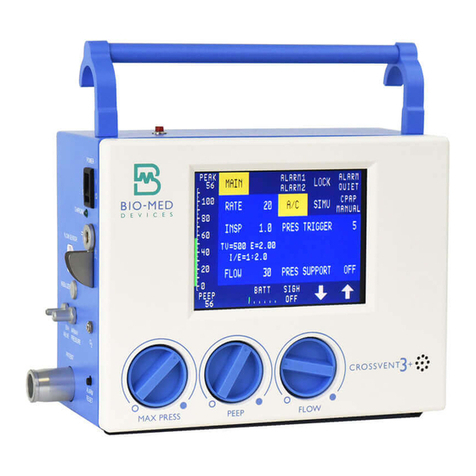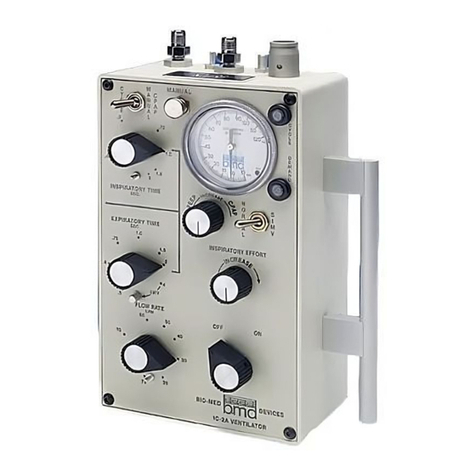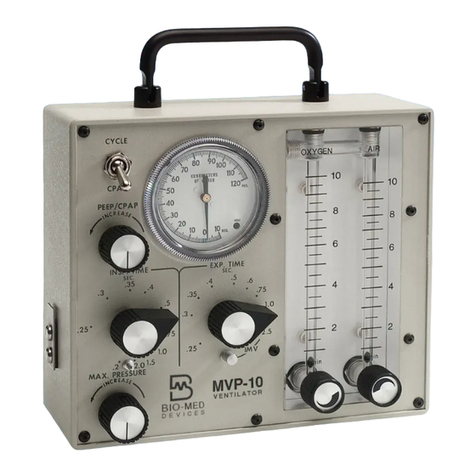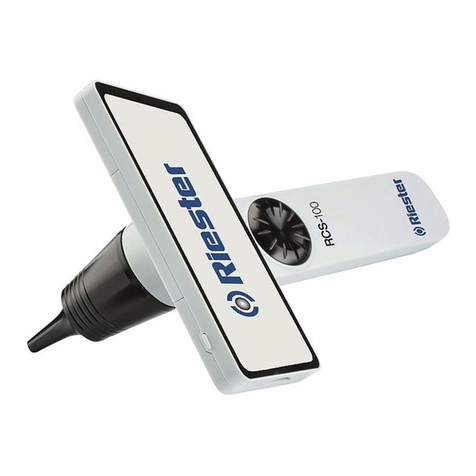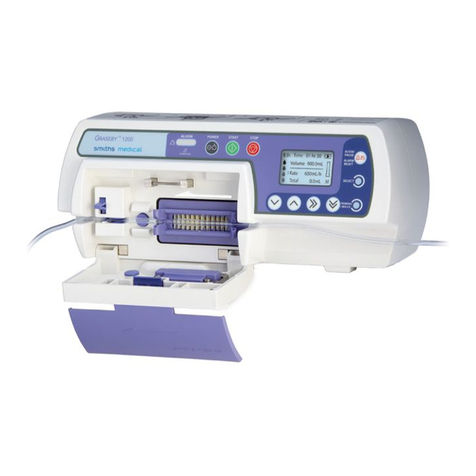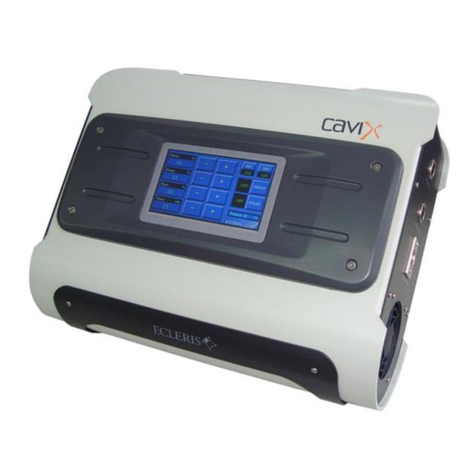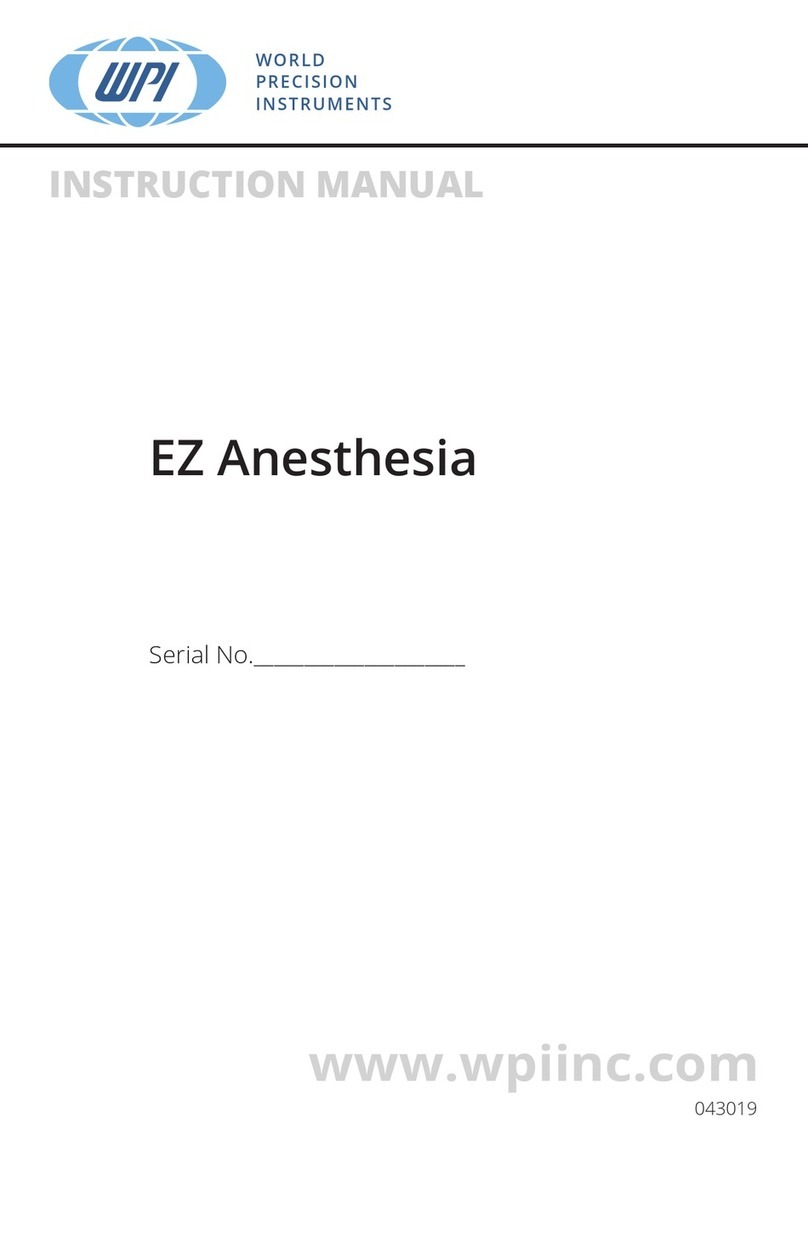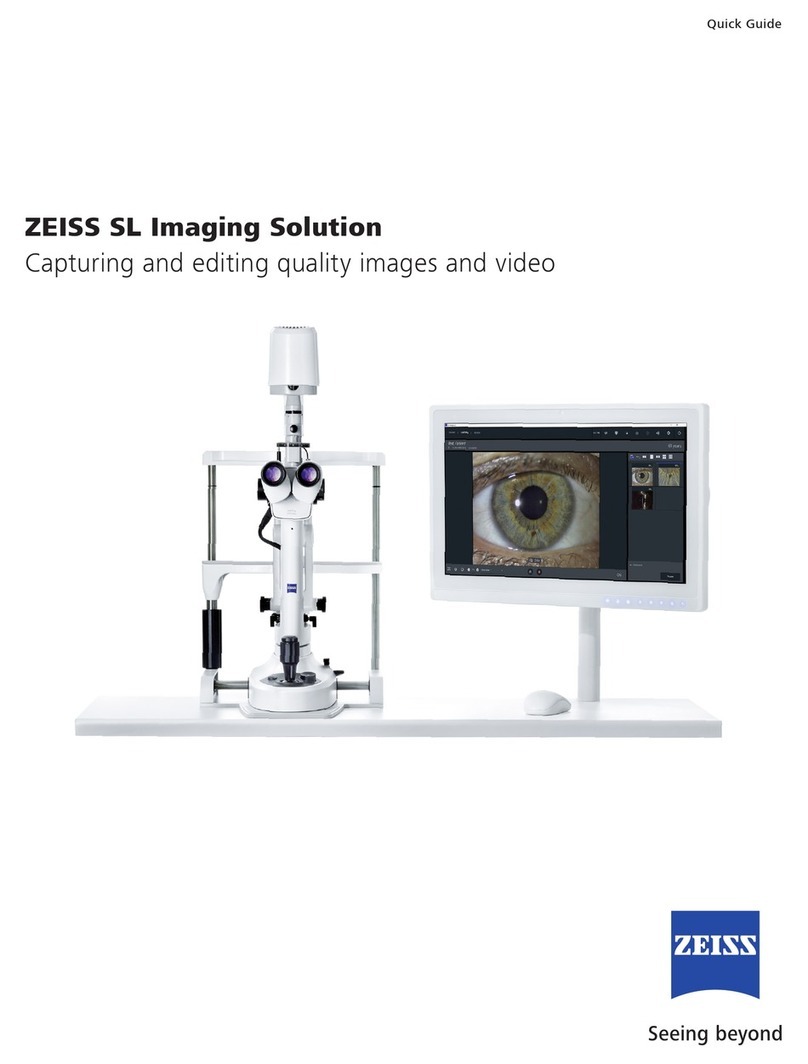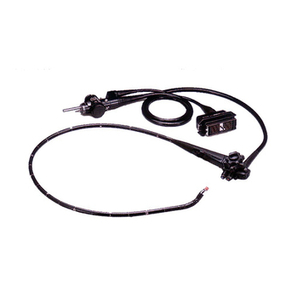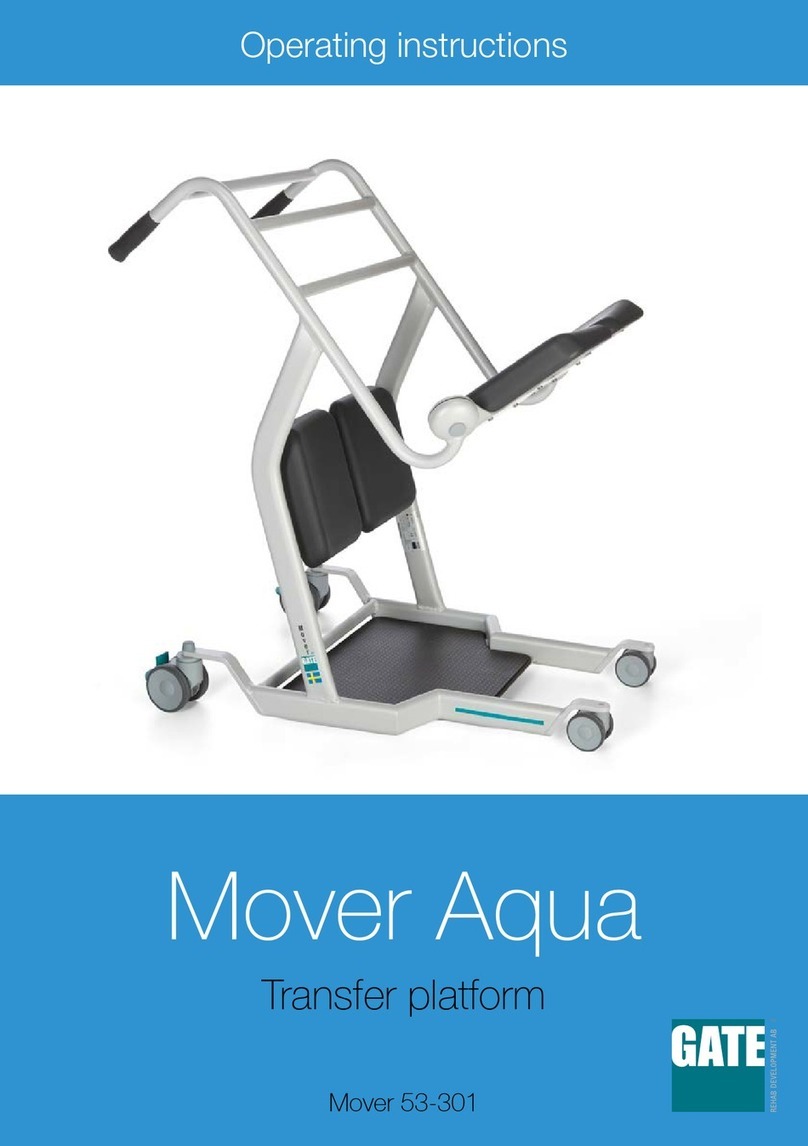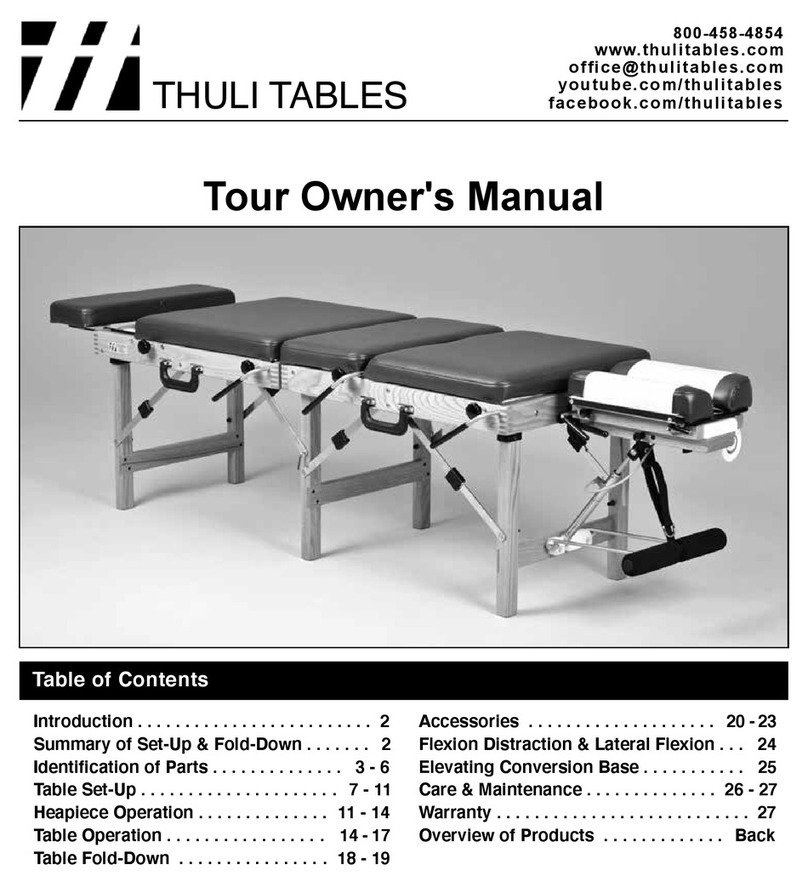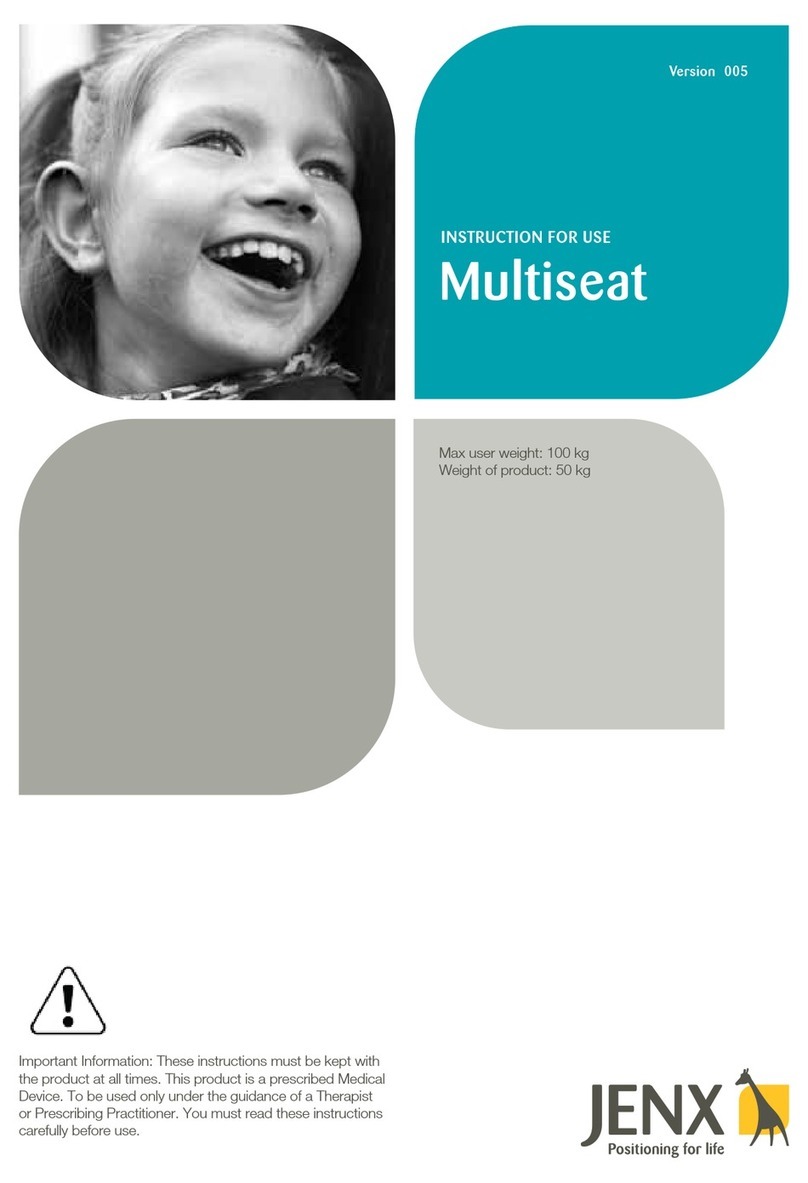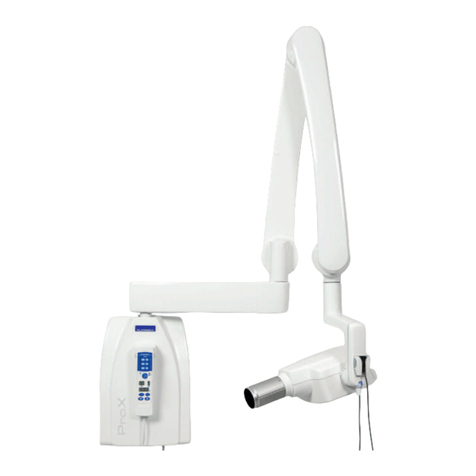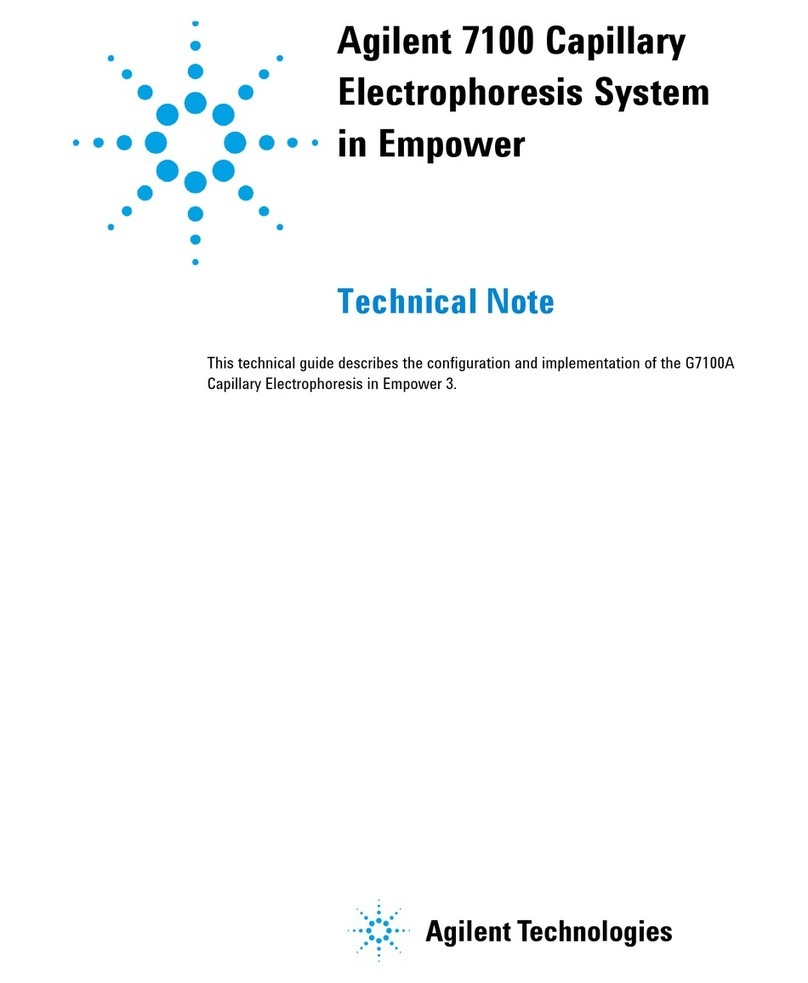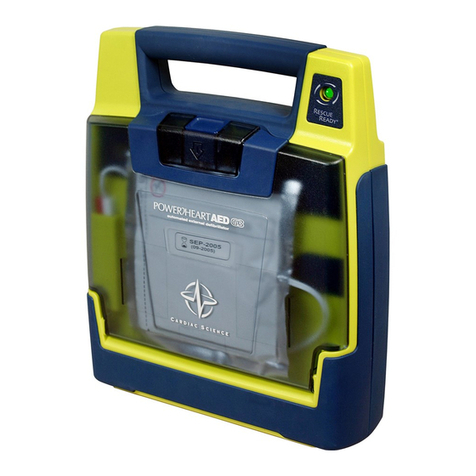BIO-MED DEVICES Crossvent-2i+ Installation and operating instructions

Crossvent-2i+
INTENSIVE CARE/TRANSPORT
VENTILATOR
OPERATION & SERVICE MANUAL
CATALOG #2204iC
Revision: 102621
Bio-Med Devices, Inc.
61 Soundview Road, Guilford, CT 06437
800-224-6633 FAX 203-458-0440
Web Site: www.biomeddevices.com
COPYRIGHT 2006 BIO-MED DEVICES INC.

TABLE OF CONTENTS
I. PATIENT SAFETY, WARNINGS, AND CAUTIONS ............................................................1
WARNINGS ............................................................................................................................................................................................ 1
CAUTIONS.............................................................................................................................................................................................. 4
NOTES...................................................................................................................................................................................................... 5
SYMBOLS ................................................................................................................................................................................................ 7
II. UNPACKING AND ACCESSORIES....................................................................................... 9
A- UNPACKING ................................................................................................................................................................................... 9
B- ACCESSORIES.................................................................................................................................................................................. 9
III. SPECIFICATIONS, CONNECTIONS AND USER INTERFACE ...................................10
A- GENERAL DESCRIPTION........................................................................................................................................................ 10
B- SPECIFICATIONS......................................................................................................................................................................... 11
C- ADDITIONAL SPECIFICATIONS .......................................................................................................................................... 11
D- MANUAL CONTROLS AND CONNECTIONS ................................................................................................................. 12
1- FRONT OF VENTILATOR ................................................................................................................................................ 12
L/min (LFLOW) KNOB.................................................................................................................................12
PIP KNOB ......................................................................................................................................................12
PEEP KNOB ..................................................................................................................................................12
AUDIBLE TONE GENERATOR ..................................................................................................................12
ALARM LED.................................................................................................................................................12
POWER ON/OFF SWITCH...........................................................................................................................12
ALARM RESET SWITCH ............................................................................................................................12
2- REAR OF VENTILATOR.................................................................................................................................................... 13
GAS SUPPLY INLET....................................................................................................................................13
EXTERNAL ELECTRICAL SUPPLY CONNECTOR.................................................................................13
BATTERY......................................................................................................................................................13
PATIENT OUTLET .......................................................................................................................................14
EXHALATION VALVE CONNECTOR ......................................................................................................14
AIRWAY PRESSURE CONNECTOR..........................................................................................................14
PNEUMOTACH CONNECTORS .................................................................................................................14
OXYGEN SENSOR CONNECTOR..............................................................................................................14
MAXIMUM PRESSURE RELIEF VALVE ..................................................................................................15
NEGATIVE PRESSURE RELIEF VALVE ..................................................................................................15
E- DISPLAY INTERFACE & MENUS.......................................................................................................................................... 16
1- DISPLAY OVERVIEW ......................................................................................................................................................... 16
2- BACKLIGHT & PRESSURE BAR GRAPH .................................................................................................................... 16
BACKLIGHT .................................................................................................................................................16
AIRWAY PRESSURE BAR GRAPH ...........................................................................................................16
3- MAIN MENU........................................................................................................................................................................... 16
ASSIST CONTROL (A/C).............................................................................................................................17
SIMV ..............................................................................................................................................................17
CPAP ..............................................................................................................................................................17
MANUAL.......................................................................................................................................................17
CONSTANT FLOW.......................................................................................................................................17
FLOW TRIGGER...........................................................................................................................................17
PRESSURE SUPPORT..................................................................................................................................18
RATE..............................................................................................................................................................18
SIMV RATE...................................................................................................................................................18
BACKUP RATE ............................................................................................................................................18
TIDAL VOLUME (TV) .................................................................................................................................18
INSP ...............................................................................................................................................................18
I, E, I/E KEY ..................................................................................................................................................18
FLOW KEY....................................................................................................................................................18
4- ALARM MENUS ..................................................................................................................................................................... 19

ALARM KEY ................................................................................................................................................19
NOTES REGARDING ALARMS .................................................................................................................20
5- KEYS COMMON TO ALL MENUS ................................................................................................................................. 21
LOCK .............................................................................................................................................................21
ALARM QUIET.............................................................................................................................................21
ARROW KEYS..............................................................................................................................................21
AUTO SET.....................................................................................................................................................21
POWER SOURCE KEY ................................................................................................................................22
INSPIRATORY SOURCE KEY....................................................................................................................22
SETUP KEY...................................................................................................................................................22
IV. SETUP AND OPERATING INSTRUCTIONS....................................................................24
A- PATIENT CIRCUIT ...................................................................................................................................................................... 24
B- OPERATING INSTRUCTIONS ................................................................................................................................................ 25
1- PRELIMINARY STEPS ................................................................................................................................................................. 25
2- DETAILED OPERATING INSTRUCTIONS ........................................................................................................................ 26
3- SUMMARY OF OPERATING INSTRUCTIONS.................................................................................................................. 27
V. SETUP MENU AND TROUBLESHOOTING......................................................................28
A- SETUP MENU ................................................................................................................................................................................ 28
1- OXYGEN SENSOR CALIBRATION............................................................................................................................... 28
2- LEAK TEST ............................................................................................................................................................................. 28
3- CIRCUIT COMPLIANCE & PNEUMOTACH CHECKOUT.................................................................................... 28
This test may be used to check the circuit compliance and confirm the integrity of the pneumotach.......................... 28
4- TV/INSP PREFERENCE..................................................................................................................................................... 29
5- LANGUAGES.......................................................................................................................................................................... 29
6- VER (Version)........................................................................................................................................................................... 29
7- SN (Serial Number).................................................................................................................................................................. 29
B- CALIBRATION MENU (CAL) ................................................................................................................................................... 30
C- OPERATIONAL TROUBLESHOOTING.............................................................................................................................. 31
VI. CLEANING, STERILIZATION AND PACKING...............................................................33
A- CLEANING AND STERILIZATION...................................................................................................................................... 33
B- PACKING FOR SHIPMENT...................................................................................................................................................... 34
VII. THEORY OF OPERATIONS..............................................................................................36
A- SYSTEM COMPONENTS........................................................................................................................................................... 37
SUPPLY INLET FILTER ..............................................................................................................................37
AIRWAY PRESSURE TRANSDUCER........................................................................................................37
DIFFERENTIAL PRESSURE TRANSDUCER............................................................................................37
DIAPHRAGM ACTUATED RELIEF VALVE (D.A.R.V.)..........................................................................37
2-WAY PRESSURE RELIEF VALVE..........................................................................................................37
B- ASSIST CONTROL MODE......................................................................................................................................................... 38
C- SIMV (Synchronized Intermittent Mandatory Ventilation) MODE ...................................................................................... 39
D- CPAP (Continuous Positive Airway Pressure)........................................................................................................................... 40
E- BACKUP MODALITY ................................................................................................................................................................. 41
VIII. MAINTENANCE AND SERVICE ....................................................................................42
A- SETUP & CALIBRATION MENU OVERVIEW.................................................................................................................. 42
1- SETUP MENU OVERVIEW ............................................................................................................................................... 42
OXYGEN SENSOR CALIBRATION ...........................................................................................................42
LEAK TEST...................................................................................................................................................42
INSP/TV.........................................................................................................................................................42
LANGUAGES................................................................................................................................................42
VER (Version)................................................................................................................................................42
SN (Serial Number) ........................................................................................................................................42
2- CALIBRATION MENU OVERVIEW ............................................................................................................................. 43

BATTERY......................................................................................................................................................43
PRESSURE TRANSDUCER .........................................................................................................................43
FLOW CALIBRATION.................................................................................................................................43
TOUCHSCREEN (CALIBRATION).............................................................................................................43
KEYS (Touchscreen Test)..............................................................................................................................43
DISPLAY (LCD) TEST .................................................................................................................................43
VALVES ........................................................................................................................................................44
HOURS...........................................................................................................................................................44
FACTORY SERVICED .................................................................................................................................44
B- PERFORMANCE CHECKS........................................................................................................................................................ 45
1- SETUP MENU......................................................................................................................................................................... 45
OXYGEN SENSOR CALIBRATION ...........................................................................................................45
LEAK TEST...................................................................................................................................................45
2- CALIBRATION (CAL) MENU ........................................................................................................................................... 45
KEYS..............................................................................................................................................................45
DISPLAY .......................................................................................................................................................45
FLOW VERIFICATION ................................................................................................................................45
FLUSH ...........................................................................................................................................................46
BASE FLOW..................................................................................................................................................46
POP OFF ........................................................................................................................................................46
3- MAIN MENU........................................................................................................................................................................... 46
BAR GRAPH ACCURACY ..........................................................................................................................46
PEEP PRESSURE SIGNAL...........................................................................................................................46
BATTERY ALARM ......................................................................................................................................46
EXTERNAL POWER FAILURE ALARM ...................................................................................................47
POWER FAILURE ALARM .........................................................................................................................47
ALARM QUIET.............................................................................................................................................47
BACKLIGHT .................................................................................................................................................47
LOCK .............................................................................................................................................................47
AUTO SET.....................................................................................................................................................47
RATE..............................................................................................................................................................47
TIDAL VOLUME ..........................................................................................................................................47
ALARM MENUS...........................................................................................................................................48
FLOW TRIGGER...........................................................................................................................................48
CONSTANT FLOW MODE..........................................................................................................................48
SIMV BACKUP RATE..................................................................................................................................48
PRESSURE SUPPORT..................................................................................................................................48
MANUAL.......................................................................................................................................................48
C- RECOMMENDED TOOLS AND TEST EQUIPMENT .................................................................................................... 49
1- Special Tools and Test Equipment .............................................................................................................49
D- PREVENTATIVE MAINTENANCE ...................................................................................................................................... 50
1- RECOMMENDED MAINTENANCE SCHEDULE.................................................................................................... 50
TIMELINE .....................................................................................................................................................50
GAS INLET FILTER .....................................................................................................................................50
BATTERY CHECK .......................................................................................................................................50
2- PREVENTIVE MAINTENANCE PARTS KITS ........................................................................................................... 50
E-SOFTWARE UPGRADES ............................................................................................................................................................ 51
F- PNEUMATIC CALIBRATION................................................................................................................................................... 52
G- DISASSEMBLY & REASSEMBLY INSTRUCTIONS ......................................................................................................... 58
1. REAR PANEL .......................................................................................................................................................................... 58
2. BATTERY REMOVAL & REPLACEMENT................................................................................................................... 58
3. FRONT BEZEL....................................................................................................................................................................... 59
4. DISPLAY/TOUCHSCREEN ............................................................................................................................................... 59
5. PRINTED CIRCUIT BOARD (PCB) ................................................................................................................................. 59
6. COMPLETE PNEUMATICS AS AN ASSEMBLY......................................................................................................... 60
7. PNEUMATIC VALVE BRACKET ASSEMBLY............................................................................................................. 60
8. FLOW, PIP & PEEP VALVES............................................................................................................................................. 60
9. SOLENOIDS ............................................................................................................................................................................ 61
10. GAS INPUT FILTER ........................................................................................................................................................... 62
11. PREVENTIVE MAINTENANCE KITS ........................................................................................................................ 62

H- TECHNICAL TROUBLESHOOTING.................................................................................................................................... 63
IX. PARTS LIST AND SCHEMATIC DIAGRAMS....................................................................65
A- REPLACEMENT PARTS LIST .................................................................................................................................................. 65
B- SCHEMATICS ................................................................................................................................................................................. 66
1- PNEUMATIC SCHEMATICS ............................................................................................................................................. 66
3- CIRCUIT SCHEMATICS ...................................................................................................................................................... 69
WARRANTY .................................................................................................................................80
APPENDIX A................................................................................................................................81
ABBREVIATIONS .............................................................................................................................................................................. 81
APPENDIX B ...............................................................................................................................82
DEFAULT SETTINGS....................................................................................................................................................................... 82
APPENDIX C ...............................................................................................................................83
SUMMARY OF DISABLED FUNCTIONS.................................................................................................................................. 83
APPENDIX D ...............................................................................................................................84
AUDIBLE ALARM CODES ............................................................................................................................................................. 84
APPENDIX E ...............................................................................................................................84
CHARGERS AND INVERTERS..................................................................................................................................................... 84
APPENDIX F................................................................................................................................86
EMC Compatibility................................................................................................................................................................................ 86
Additional Guidance and manufacture’s declaration – electromagnetic emissions/immunity ....................................... 86
APPENDIX G ...............................................................................................................................89
TRAINING RECOMMENDATIONS ........................................................................................................................................... 89
APPENDIX H...............................................................................................................................90
DEVICE END-OF-LIFE DISPOSAL ............................................................................................................................................ 90
INDEX ..........................................................................................................................................91

1
I. PATIENT SAFETY, WARNINGS, AND CAUTIONS
The Crossvent-2i+ ventilator is intended for use only by a qualified practitioner, under the direction of a qualified physician.
All personnel operating the ventilator must be completely familiar with the warnings and operating procedures in this manual
prior to using the Crossvent-2i+ with patients. As with any life support device, competent personnel should visually monitor
the patients on the Crossvent-2i+ at all times since life-threatening conditions may arise that may not be detected by the
alarms. It is essential to test all life-support devices for proper function prior to each use on patients.
A- WARNINGS, CAUTIONS, AND NOTES
The following terms are used throughout this manual:
WARNING - INDICATES A PROCEDURE OR CONDITION THAT COULD
CAUSE BODILY INJURY.
CAUTION -Signifies a procedure or condition that could damage the equipment.
NOTE -Refers to a procedure or condition that requires special attention.
WARNINGS
•Whenever the Crossvent-2i+ is connected to a patient, a skilled operator should always be present at all times at
the ventilator or within visual or hearing range of the ventilator’s alarm system.
•High oxygen concentrations may be hazardous to the patient.
•If the gas supply fails or there is a total electrical power failure, the patient may breathe atmospheric gas through
the failsafe valve. This is, however, only a temporary emergency measure, which requires elevated inspiratory
effort and it should be corrected immediately.
•Always operate the CV-2i+ on battery prior to use to confirm that the battery is functioning.
•In the event of an AC power failure, the Crossvent-2i+ will automatically switch over to battery operation and
sound an alarm. The audible alarm may be silenced by pressing the POWER SOURCE window. On a fully
charged battery, there will be approximately 2 ¾ hours of autonomous operation. No further alarm will be
sounded until the battery is low. It is imperative to restore AC power at this time to assure continued safe
operation of the ventilator.
•A patient filter should always be used in the patient breathing circuit to prevent cross contamination. Breathing
through the negative pressure relief valve in a contaminated environment can be hazardous.
•Extreme care should be taken to assure that the patient circuit components are connected correctly. Improper
connection can cause malfunction.
•A test lung should be ventilated prior to each use to insure that all modes are functioning correctly. An external
spirometer should be used to verify correct volumes and flow rates.
•The patient should never be left unattended after the ALARM QUIET key is depressed since this is followed by a
period when the audible alarms are deactivated.
•An audible alarm always indicates an anomalous state that should always be rectified.
•While the oxygen alarm may be turned off to permit use of the Crossvent-2i+ without this sensor, it is
recommended that it be used at all times.
•Always be certain that the PIP Limit is set correctly and is operative even when volume limiting, to prevent
possible inadvertent administration of high pressure. Increased pressure can be caused by blocked tubes, changes
in patient compliance or resistance, or system malfunction.
•If it is desired to temporarily disconnect the patient for clinical interventions such as suctioning, the alarms
should be silenced by pressing the ALARM QUIET key. Pressing once will give a 60 second period and pressing
twice a 2 minute period, during which time the alarms are silenced. If more time is needed, the ALARM QUIET
key may be pressed again after the alarm sounds. Never turn the power switch off in order to silence the alarms,
since this permanently deactivates all alarms.

I. PATIENT SAFETY- CONT.
2
•Under certain conditions in SIMV, when the low peak pressure alarm is set correctly for assisted breaths, there
may be no low peak pressure alarm following a patient disconnect until the next assisted breath. This period may
be up to 100 seconds. As an added precaution, set the low PEEP/CPAP, low exhaled tidal volume and rate
alarms so that they are operative.
•Backup Rate is inoperative in Constant Flow mode.
•When an alarm parameter is turned off, Auto Set is deactivated for that parameter.
•The alarm ports on the front of the CV-2i+ should never be obstructed.
•For proper operation only the O2 sensor supplied by Bio-Med Devices may be used.
•Never operate the Crossvent-2i+ without a battery since it will fail to operate if the plug-in power supply is
removed.
•To avoid risk of electrical shock when using the CROSSVENT with AC power connected, this equipment must
only be connected to a supply mains with protective earth.
•The screened ports on the back and bottom of the unit should not be obstructed when the ventilator is in use.
•Only qualified, trained, service technicians should attempt repairs and service when needed. Serious personal
injury and/or equipment damage can result if repairs are performed by unqualified personnel.
•It is imperative to verify that clinically appropriate alarm limits are fully operational following connection of the
ventilator to a patient.
•It is important to note that once a sensor has been turned off, the alarms for that sensor are inoperative.
•Breathing through the negative pressure relief valve requires a greatly increased work of breathing and only air is
provided. A situation in which the patient is breathing through this valve should be rectified immediately in order
to prevent possible adverse affects to the patient.
•It is extremely important that the Flow Trigger control be carefully adjusted to assure proper operation in the
CPAP mode.
•Under certain conditions in CPAP, in particular with high flows and low CPAP pressures, if the low peak pressure
alarm is set so that no false alarms occur, this alarm may be inoperative if a disconnect occurs. It is therefore
extremely important to have the low PEEP/CPAP and low Exhaled Tidal Volume alarms set correctly
•It is important in Backup modality to always set a correct rate, tidal volume and flow to insure proper ventilation in
case the patient becomes apneic.
•To obtain the full 3-minute duration of the Power Failure alarm, the Crossvent must have been powered on for at
least 1 minute.
•All safety measures must be observed when servicing this device. In particular, the ventilator must be turned off
and the power supply disconnected.
•Bio-Med Devices cannot be held responsible for any failure to adhere to the recommendations set forth in this
manual.
•The CROSSVENT must never be modified without prior expressed written consent from Bio-Med Devices.
•Auto-triggering or missed breaths may occur due to various conditions including, but not limited to, compliance,
resistance, rate, flow, PEEP, I:E ratio, and circuit characteristics.

I. PATIENT SAFETY- CONT.
3
•Do not re-use disposable breathing circuits. Re-use of disposable (single-use) breathing circuits can result in
contamination (patient infection) or circuit degradation (circuit can fall apart, develop holes, or exhibit polymer
decay).
•The pneumotach must be in the circuit and connected to the ventilator when using Flow Triggering. If the
pneumotach is not being used, then Constant Flow should be the ventilator mode.
•Without the pneumotach in the circuit and connected to the ventilator, there will be no patient
triggered breaths.
•Do not continue using a ventilator which has been significantly impacted or abused.
•Volume-limited ventilators should not be used on unattended patients.

I. PATIENT SAFETY- CONT.
4
CAUTIONS
•Clean, dry, medical grade gas sources supplied at 17 – 55 psi (117 kPa – 380 kPa) unrestricted flow must be used at
all times to assure proper operation of the Crossvent-2i+ Ventilator.
•The Crossvent-2i+ should not be steam or gas sterilized as this will result in damage to some of its components.
•When connecting the pneumotachograph (optional) it is important that the proximal and distal tubes be connected
to the proper connector to assure correct operation. It is also important that the side ports of the flow sensor
head point upward to prevent condensate from collecting in the two pressure tubes. Condensate can cause
improper readings and this in turn can cause possible system malfunction. These tubes should be periodically
inspected and any condensate should be removed.
•Always connect both flow sensor tubes to the ventilator before attaching sensor head to patient circuit to prevent
possible damage to the internal sensing device and also to prevent humidified gas from possibly flowing up the
tubes.
•Never block the patient proximal or patient distal connections or flow sensor head with gas supply connected to the
ventilator as this can possibly damage the flow transducer.
•Connect the oxygen sensor (optional) upstream of the humidifier since the fuel cell functions better in non-
humidified gas.
•Touch screen control keys should be pressed by hand only. Care should be taken not to allow keys to be contacted
by sharp objects as damage may result.
•Clean touch screen only with alcohol. Clean the rest of the Crossvent-2i+ unit with mild, non-abrasive, anti-
bacterial cleanser.
•Do not place liquids on or near the Crossvent-2i+. Liquid entering the unit can cause severe damage and
malfunction.
•It is recommended that the Crossvent-2i+ never be left with its battery discharged as this will reduce battery life.
After discharge of the battery, recharge fully before disconnecting the plug-in power supply.
•Only replace the battery pack with Bio-Med Devices part #PRT2268. Do not substitute. The cells are non-
standard high capacity
•When using an AC power source, only the power supply provided with the Crossvent is approved for use with this
ventilator. Any other power supply may cause damage and/or unreliable operation (See Appendix E).
•Any more comprehensive DC power supply than that which is supplied must be short circuit protected and must
comply with all of the specifications and standards as listed in Section III, Part B.
•Do not use in an MRI room.
•Antistatic or electrically conductive hoses or tubing should not be used.
•When it is necessary to operate the Crossvent from an AC inverter, only inverters in compliance with NEMA
standards should be used (see Appendix E).
•Do not allow the temperature of the battery to go above 131° F (55° C) whether the unit is on or off as this may
cause damage resulting in a shorter life expectancy of the battery.

I. PATIENT SAFETY- CONT.
5
•Do not position the equipment in such a way as to make it difficult to operate the disconnect device (applies to
either end of the power cord: the wall plug or the connector to the AC adapter).
NOTES
•Battery Backed Memory- When the Crossvent-2i+ is turned on, it automatically recalls all of the settings stored in
memory before it was turned off. The parameters stored are: all the main functions; high and low alarm limits;
secondary modes; oxygen and flow calibrations; and which sensors are on or off. Several factors can cause the
battery backed memory to be lost. These are: low battery backed memory battery voltage (service required);
defective random access memory (service required); or if the microprocessor is, by chance, storing data in the
battery backed memory at the time power is turned off. In this case it is necessary to re-enter the previously set
parameters.
•The PIP should always be set higher than PEEP in order to achieve the PEEP setting.
•To conserve gas, the PIP and PEEP controls should be turned off (fully counter clockwise) when the CV-2i+ is not
in use.
•When an alarm parameter is turned off, auto set is deactivated for that parameter. Whenever an alarm limit is
manually entered, it takes precedence over the auto-limit already in memory. When peak pressure is computed in
SIMV, if no assisted or controlled breaths are sensed within the 5 breath computation period, another 5 breath
period is used. This is repeated until at least 1 assisted or controlled breath is measured.
•Auto Set is inactive in CPAP in the Constant Flow mode.
•The Power Failure alarm may not be silenced using the Alarm Quiet key. The Power Failure alarm may be silenced
by pressing the alarm reset button or by pressing a mode key.
•Pressure Support is only active during SIMV and CPAP with Constant Flow off. It is disabled when in Assist
Control.
•The wall plug-in power supply is furnished for 117 vac, 60 hz or 220 vac, 50 hz operation, as required. It is not
possible to overcharge the battery. Always keep the battery fully charged when not in use.
•It is important to use the correct reference gases (100 and 21%) when performing the Oxygen sensor calibration.
A worn out sensor will not calibrate accurately.
•Since it is not possible to damage the Crossvent-2i+ ventilator by normal use of its keys and control knobs, the
user is encouraged to experiment with the Crossvent-2i+ settings while the unit is not connected to a patient.
•A highlighted field on the display indicates that a parameter has been selected and may be adjusted using the arrow
keys.
•The Auto Set key should always be used to establish initial alarm limits. These may be used for patient monitoring,
in order to facilitate setup or may be set temporarily until “custom limits” are entered to suit specific clinical
requirements. Any or all of the limits may then be manually changed.
•If it is desired to deactivate the oxygen sensor alarm, select OXYGEN in the Alarm 2 menu. Scroll the lower limit
down to off. The function is now inoperative. The function may be reactivated at any time by pressing it and
scrolling the low limit up. It is now reactivated. This allows the ventilator to be used without the oxygen sensor.
When the alarm is set to off, the sensor may be disconnected while the ventilator is in use without causing an
alarm.
•For blended gas, the Bio-Med Devices blender should be used.
•It is recommended that an external filter/water trap be used at all times in order to provide greater protection to the
internal components of the Crossvent-2i+.
•If ventilator internal contamination results from not using a patient filter, do not try to clean the ventilator
internally; instead return it to the factory for evaluation.

I. PATIENT SAFETY- CONT.
6
•When checking or calibrating flows, for greatest accuracy verify flow using a 60% O2 gas supply if this Crossvent is
used with an air/oxygen blender. Otherwise, use 100% oxygen. Make certain that the supply pressure to the CV-
2i+ inlet remains within specified pressure limits (17-55 psi (117-380 kPa) at all flows.
•If a period longer than 60 sec passes before pushing BATTERY block when the Crossvent is first turned on, an
audible alarm will sound. When BATTERY block is pushed, the audible alarm will also be silenced.
•Due to the fact that O2 sensors sometimes change output over time once exposed to atmosphere, a calibration
should be performed periodically (once a month) in order to assure optimal accuracy. When the sensor is
consumed and does not calibrate properly, it should be discarded and a new sensor installed and calibrated.
•Exhaled minute volume indicates a projected or anticipated minute volume based on the current exhaled tidal
volume readings.
•With Constant Flow on, inspiratory time is used exclusively.
•20 minutes of operation after low battery alarm assumes a properly maintained battery in good condition.
•The battery should be replaced at least every two years. Only use batteries supplied by Bio-Med Devices, part
#PRT2268.
•When first turned on, the unit displays “Bio-Med Devices, Inc.” until the initialization process is complete. If this
does not clear, submit unit for service.
•While scrolling, some hesitation may be observed.
•The possibility of hazards arising from errors in the software program is minimized via the use of the standards EN
62304 & ISO 14971 in design control.
•Negative pressure (subatmospheric) is not available with this ventilator during the expiratory phase.

I. PATIENT SAFETY- CONT.
7
SYMBOLS
Follow Instructions for Use
Product should be kept dry
MR Unsafe
Type BF Equipment
Manufacturer
Date of Manufacture
Country of Origin & Manufacture
Direct Current (DC)
It is essential that these instructions be read and complied with prior to operating this product.
Must be disposed of in accordance with WEEE Directive.
At the unit’s “end of life”, it may be returned to the manufacturer for proper reclamation.
Do not rotate the power supply plug when it is engaged with the jack.
Alarm Reset Switch
Power On/Off Switch
Power On
Power Off/Valve Closed
Valve Open

I. PATIENT SAFETY- CONT.
8
Rx Only
Caution: Federal law restricts this device to sale by or on the order of a licensed healthcare
practitioner
Medical Device
Unique Device Identifier

9
II. UNPACKING AND ACCESSORIES
A- UNPACKING
CAUTION: Prior to turning the unit on for the first time, the battery must be charged fully
using the included power supply.
Examine the shipping carton for signs of damage. Examine the Crossvent-2i+ carton to ascertain whether it has
sustained any damage during shipment. Inspect the contents of the shipping carton. If damage is observed, notify the
carrier at once. Only you, the consignee, can make a claim against the carrier for damage in shipment.
Prior to using the Crossvent, charge the unit until the green charging indicator stops blinking and remains solidly lit.
Refer to the performance checks in the service section prior to placing this ventilator in service.
B- ACCESSORIES
The following is a list of the equipment supplied with the Crossvent-2i+ Ventilator.
Quantity Cat. No. Description
1 20301Disposable breathing circuit
1 200111Disposable breathing circuit
1 1021 Infant Test Lung
1 4409 Disposable Pneumotach
1 4434 Oxygen Sensor Cell
1 2204iC Instruction Manual
1 -------- Warranty Card
1 4419A Charger w/Cord, U.S. AC Adapter
1 4419B2Charger w/Cord, Int’l AC Adapter
1- Depending on incubator setup
2- International orders

10
III. SPECIFICATIONS, CONNECTIONS AND USER INTERFACE
A- GENERAL DESCRIPTION
The Crossvent-2i+ Intensive Care/Transport Ventilator is an ultra compact, electronically controlled, time cycled, volume or
pressure limited ventilator with intensive care capabilities designed specifically to fit into isolettes. It provides a wide range of
operating parameters to allow ventilatory support of patients from pediatric to neonate. It may be used either as a pulsatile
flow device or with constant flow. The Crossvent-2i+ delivers the same oxygen concentration as the supply gas.
CAUTION:Do not use in an MRI room.
The ventilator’s microprocessor provides all operational functions, as well as monitoring the patient and providing alarms.
It allows the user to enter many different operational and alarm parameters to accommodate a wide variety of clinical
situations. It also makes possible such advanced functions as automatic setting of alarm limits and the computation of more
complex parameters such as mean pressure.
Using its auto-set feature, the main alarms of the Crossvent-2i+ may all be set in a matter of seconds with a single keystroke.
Airway pressure is sensed using an internal pressure transducer, and pressure is displayed as a bar graph on the LCD. A
flow transducer is used to measure exhaled tidal and minute volume and to sense effort for flow triggering. An absolute
pressure transducer monitors atmospheric pressure and automatically compensates for altitude changes.
The Crossvent-2i+ has an internal battery that provides power during transport and in the event of an AC power failure. If
the external power should fail, the ventilator automatically switches to its internal battery and sounds an alarm. The
ventilator will function on a fully charged battery for approximately 2 ¾ hours. If more time than that is required, the
backlight may be turned off as described in this manual. Whenever external power is restored, the Crossvent-2i+ switches
back to external power operation. It will charge the battery whenever external power is available.
The Crossvent-2i+ Ventilator’s extreme reliability is made possible by:
1- The absence of rotating or sliding mechanical parts.
2- An absolute minimum of moving parts.
3- An extremely low total parts count.
In addition to increased patient safety, the high reliability insures low downtime and thus more economical use.
The Crossvent-2i+ provides a complete array of features and ventilation modes and functions, some of which include:
Microprocessor control of all operational functions and monitoring.
Displays and alarms for Peak, Mean and PEEP pressures.
Exhaled Tidal Volume and Minute Volume displays & alarms.
Programmability and expandability.
Built-in triggered demand flow for minimum work of breathing during SIMV and CPAP and a simplified system
design.
Integral Assist Control, SIMV, CPAP, PEEP, Pressure Support.
RS-232 input for PC interface for software updates.

III. SPECIFICATIONS, CONNECTIONS AND USER INTERFACE- CONT.
11
B- SPECIFICATIONS
Parameter
Range
Resolution of Display
Accuracy
CMV Rate
1- 150 bpm
1 bpm
±10%
SIMV Rate
0.6- 50 bpm
0.1 bpm below 1, 1 bpm above 1
±10%
CPAP Rate
5- 150 bpm
1 bpm
±10%
Tidal Volume
5- 750 ml
1 ml below 200; 10 ml above 200
±10%
Inspiratory Time
0.1- 3.0
.05 below 1.00, 0.1 above 1.00
±10%
Flow Rate
1- 15 lpm
0.1 lpm below 10; 1 lpm above 10
±10%
Peak Pressure (PIP)
0- 80 cmH
2
O
1 cmH
2
O
±3% FS
PEEP Pressure
0- 20 cmH
2
O
1 cmH
2
O (above baseline)
±3
Flow Trigger
1- 20 (scale)
1 unit
N/A
Pressure Support
1- 50 cmH
2
O
1 cmH
2
O (above baseline)
±3
O
2
Sensor
0- 100 %
1%
±3% FS
EXHTV
0- 1300 ml
0.1 ml below 50; 1 ml from 50-200, 10 ml thereafter
±15%1
EXHMV
0- 45 L
0.1 L below 10, 1 L thereafter
±15%
1
1. Readings below 10 ml may be considered relative rather than absolute values.
2. NOTE: All values are expressed under ATPD conditions (ambient temperature & pressure dry)
C- ADDITIONAL SPECIFICATIONS
Base Flow
2.5 lpm
Continuous Flow
1 – 15 lpm
Maximum Safety Pressure:
96 cmH2O
Pneumatic Power Source
17 – 55 psi (117 kPa – 380 kPa)
Audible Alarm Characteristics
90 dB at 10cm (25°C)
Electrical Power Source
See Appendix E
Output:
16.0 VDC, 3 A
Output Protection:
Short Circuit and Overload
Isolation:
Meets IEC601.1, classification BF, UL 544 Patient Care, CSA 125 Risk Class
2G
Maximum Ripple:
<100 mVp-p
Safety:
Approved to UL 544/2601.1, CLU (CSA) 22.1 #125/601.1, TUV
EN60601.1 & CE LVD
EMC:
Designed to Level B Requirements of FCC part 15, CISPR11 (EN55011).
Less than 1 Volt Output Deviation for IEC801-2, 3, 4, 5, Immunity Tests.
Overall Dimensions
Height:
7.5" (191 mm)
Width:
8.4" (213 mm)
Depth:
4.4" (112 mm)
Weight:
7.65 lbs. (3.5 kg)
Operating Temperature:
32 to 104 degrees F. (0 to 40 degrees C)1

III. SPECIFICATIONS, CONNECTIONS AND USER INTERFACE- CONT.
12
Storage Temperature:
32 to 122 degrees F. (0 to 50 degrees C)1
Altitude:
Sea level to 10,000 feet (3048 meters)
1. When using the oxygen sensor, then 41° – 104° F (5° – 40° C); battery will not fast charge below 41° F (5° C) nor above
125°F (51° C).
Breathing circuit resistances:
Breathing circuit model
Flow case (lpm)
Inspiratory Resistance
(cmH2O / lpm)
Expiratory resistance
(cmH2O / lpm)
20011
5
0.03
0.06
D- MANUAL CONTROLS AND CONNECTIONS
1- FRONT OF VENTILATOR
L/MIN (LFLOW) KNOB
A pneumatic needle valve which sets the inspiratory flow from 0- 15 lpm. The
Flow window displays the flow setting. It is accurate from 1 to 15 lpm.
PIP KNOB
A pneumatic needle valve which sets the pressure, which is applied to the
exhalation valve and to the internal diaphragm, actuated relief valve (D.A.R.V.)
and determines the PIP during assisted and controlled inspirations. It is
adjustable from 0 - 80 cmH2O. It should always be operative and properly
adjusted.
NOTE: To conserve gas, the PIP and PEEP controls should be
turned off (fully counter clockwise) when the CV-2i+ is not in use.
PEEP KNOB
(Positive End Expiratory Pressure)- A pneumatic needle valve which sets the PEEP or CPAP (Continuous Positive Airway
Pressure) level which is applied to the exhalation valve. It is adjustable from 0- 20 cmH2O. The PEEP level is determined
by observing the system pressure bar graph or with the PEEP/CPAP readout on the secondary alarm menu.
NOTE: The PIP should always be set higher than PEEP in order to achieve the PEEP setting.
NOTE: To conserve gas, the PIP and PEEP controls should be turned off (fully counter clockwise)
when the CV-2i+ is not in use.
AUDIBLE TONE GENERATOR
Located next to the BMD logo on the front of the unit, it emits the audible tones to indicate an alarm condition or keyboard
actuation. The tone for a standard alarm is rated at 90 dB.
WARNING: It should never be obstructed.
NOTE: Refer to Appendix D for all the beeper codes.
ALARM LED
It flashes on and off in equal duration during any alarm providing full frontal visibility. When the unit is turned off or loses
power, it flashes for 3 minutes. This time may be less if the Crossvent was not powered on for at least 1 minute prior to
loss of power.
POWER ON/OFF SWITCH
It is located on the front of the unit and is recessed in order to reduce inadvertent or unauthorized use. It controls the main
power to the electronics. If the battery is allowed to fall below 6 volts (well below the Low Battery alarm limit) with the unit
operating, the ventilator will turn off independent of this switch. If this occurs, this switch must be turned to OFF before
the ventilator will operate again, regardless of power source.
WARNING: NEVER USE THE ON/OFF SWITCH TO SILENCE THE
ALARMS SINCE THIS RENDERS THE ALARMS PERMANENTLY
DISABLED.
ALARM RESET SWITCH
Silences the alarm of the Power Failure circuit, which is a separate section of the main circuit board. It is not under the
control of the microprocessor.

III. SPECIFICATIONS, CONNECTIONS AND USER INTERFACE- CONT.
13
WARNING: TO OBTAIN THE FULL 3 MINUTE DURATION OF THE
POWER FAILURE ALARM, THE CROSSVENT MUST HAVE BEEN
POWERED ON FOR AT LEAST 1 MINUTE.
This power failure circuit monitors the power to the main circuit board. If power is lost, either as a result of turning the
main power switch off or a total power failure to the circuit board, i.e., no external power and no battery, it sounds an
audible alarm (long tone) and flashes the LED which will continue for 3 min. after failure. This may be less if the unit has
been on for less than 1 minute. Pressing the Alarm reset switch permanently silences the audible alarm.
2- REAR OF VENTILATOR
CAUTION: Antistatic or electrically conductive hoses or
tubing should not be used.
GAS SUPPLY INLET
Male DISS 9/16-18 fitting. Connect this to the gas supply source of the isolette.
The supply should be 17 psi to 55 psi (117 kPa to 380 kPa).
EXTERNAL ELECTRICAL SUPPLY CONNECTOR
This receptacle accepts the plug from the factory supplied, U.L. approved, wall plug-in power supply module which by
necessity meets all the specifications and standards listed in Section III, Part B. Use only Jerome Industries model
WSZ116M (16VDC, 3A) with the appropriate mating plug. This plug is keyed and the alignment dots on both connectors
must be aligned before engaging. The Crossvent should not be used with any other wall plug-in or desktop AC adapter.
This is used to operate the ventilator and to charge the battery whenever it is below full charge. The wall plug-in power
supply is furnished for 117 VAC, 60 Hz or 220 VAC, 50 Hz operation, as required. It is not possible to overcharge the
battery. Always keep the battery fully charged when not in use.
CAUTION: Do NOT attempt to rotate the power connector while it is plugged into the
ventilator. It must only be pushed straight in and pulled straight out.
CAUTION: When using an AC power source, only the power supply provided with the
Crossvent is approved for use with this ventilator. Any other power supply may cause
damage and/or unreliable operation.
CAUTION: Any more comprehensive DC power supply than that which is supplied must
be short circuit protected and must comply with all of the specifications and standards as
listed in Section III, Part B.
CAUTION: When it is necessary to operate the Crossvent from an AC inverter, only
inverters in compliance with NEMA standards should be used (see Appendix E).
BATTERY
The battery is located internally and should only be accessed by trained service personnel. Always leave the unit plugged into
the wall source to keep the battery fully charged when not in use.
The NiMH rechargeable battery is located internally and should only be accessed by trained service personnel. Always leave
the unit plugged into the wall source to keep the battery fully charged when not in use. The battery operation is
approximately 2 ¾ hours on a fully charged battery. This can be extended by turning off the backlight (refer to Backlight in
Part D of this section).
To charge the battery, only the power supply provided by Bio-Med Devices should be used. With the dot on the supply’s
connector aligned with the dot on the panel, plug the external power supply into the Crossvent and into an AC outlet and
charge the battery until the battery gauge at the bottom of the display indicates a full charge. The battery bar indicating the
remaining battery power should span the entire battery key unless the battery was fully discharged, in which case it may
indicate something less than 100%. Continued charging will bring it to 100%. The amount of time required to fully charge
the battery depends on many factors, including the state of charge when it begins. The maximum time for an exhausted
battery is approximately 2 ½ hours. When done, verify battery power by unplugging the external power cord from the rear
of the unit while it is turned on. The Crossvent should alarm and the power source key at the bottom of the display should
flash “BATTERY”. Press this key to cancel this alarm.
The battery cannot accept a charge if the temperature is over 125°F (51°C) or below 32° (0°). This situation should be
avoided. If the battery is above or below these temperatures during a rapid charge, it will go into trickle charge mode until it
is below this temperature.
When the state of the battery is determined to be within approximately 20 minutes of remaining autonomous operation, the
Alarm 3 menu will flash “LOW BATTERY, CONNECT EXTERNAL POWER” and sound the audible alarm. The
ventilator should be switched to external power or removed from service and recharged when this alarm occurs. If the
battery is allowed to expend energy to a point below 6 volts (well below the Low Battery alarm limit), the ventilator will shut

III. SPECIFICATIONS, CONNECTIONS AND USER INTERFACE- CONT.
14
down independent of the On/Off switch. If this occurs, the external power supply must be used to recharge the battery and
the On/Off switch must be turned to Off and then back to On before the unit will operate.
NOTE: 20 minutes of operation after the low battery alarm assumes a properly maintained battery in
good condition.
To prolong life and maintain performance, it is recommended that the Crossvent be stored with the power supply plugged in
or with the battery fully charged at a relative humidity of 65% (±20%) whenever possible. Because NiMH batteries will
naturally “self-discharge”, it is strongly recommended the battery be cycled through at least one charge/discharge according
to the table below if left off the power supply for an extended period of time.
Storage Temperature Range
Time to Charge/Discharge
104°F to 122°F (40°C to 50°C)
Less than 30 Days
86°F to 103°F (30°C to 39°C)
30 to 60 Days
32°F to 85°F (0°C to 29°C)
61 to 90 Days
WARNING: Never operate the CROSSVENT without a battery since it will fail to
operate if the plug-in power supply is removed.
CAUTION: The battery should be placed at least every two years. Only use batteries
supplied by Bio-Med Devices, part #PRT2268. Do not substitute.
CAUTION: Do not allow the temperature of the battery to go above 131° F (55° C)
whether the unit is on or off as this may cause damage resulting in a shorter life expectancy
of the battery.
PATIENT OUTLET
The main patient circuit corrugated hose is attached here. It provides the un-humidified breathing gas to the patient circuit.
EXHALATION VALVE CONNECTOR
Provides the pressure signal to operate the exhalation valve. During inspiration it applies a high-pressure signal to the
exhalation valve diaphragm, which sets the PIP Limit. During expiration it provides a zero or PEEP level to the exhalation
valve diaphragm.
AIRWAY PRESSURE CONNECTOR
Provides connection of the proximal airway pressure tube to the internal pressure transducer. This allows the Crossvent-
2i+ to monitor airway pressure.
PNEUMOTACH CONNECTORS
These two connectors provide the pressure signals to the internal transducer that permits the measurement of flow which is
used to display Exhaled Tidal Volume as well as sense effort for Flow Trigger. The proximal connector should be
connected to the tube on the pneumotachograph (PNEUMOTACH) which is proximal to the patient. The distal connector
is connected to the tube that is more distant from the patient. The pneumotach is attached via its two tubes to these
connectors. Flow is measured as the differential pressure across the orifice of the pneumotach.
WARNING: The pneumotach must be in the circuit and connected to the ventilator
when using Flow Triggering. If the pneumotach is not being used, then Constant
Flow should be the ventilator mode.
CAUTION: The pressure connection tubes of the pneumotach should always be mounted
vertically to prevent collection of condensate in the pressure tubes. The tubes should be
inspected periodically and condensate should be removed. This condensate may cause
erroneous readings and thus improper operation of the Crossvent-2i+. Never block these
connections with the unit operating as this can damage the internal transducer. Always
securely connect both pneumotach lines (proximal and distal) to their respective connectors
before inserting the pneumotach in the flow stream. This will prevent possible damage to
the internal transducer and will also prevent humidified gas from inadvertently blowing up
the pneumotach sensing lines.
OXYGEN SENSOR CONNECTOR
(use is optional)- Permits attachment of the O2fuel cell sensor. This provides measurement of the oxygen concentration of
the patient breathing gas mixture.
WARNING: FOR PROPER OPERATION ONLY THE O2 SENSOR SUPPLIED
BY BIO-MED DEVICES MAY BE USED.

III. SPECIFICATIONS, CONNECTIONS AND USER INTERFACE- CONT.
15
MAXIMUM PRESSURE RELIEF VALVE
A preset, relief valve exits the rear of the unit. This valve establishes the maximum safety pressure deliverable. It is set at
80 cmH2O.
WARNING: IT SHOULD NEVER BE OBSTRUCTED.
NEGATIVE PRESSURE RELIEF VALVE
A preset, negative pressure valve also exits the rear of the unit. It allows the patient to breathe ambient air if the entire
system should become inoperative. It opens at approximately -4 cmH2O.
WARNING: IT SHOULD NEVER BE OBSTRUCTED.
WARNING: Should the use of the negative pressure relief valve become necessary,
the operation of the Crossvent in a contaminated environment can be hazardous.
Table of contents
Other BIO-MED DEVICES Medical Equipment manuals
